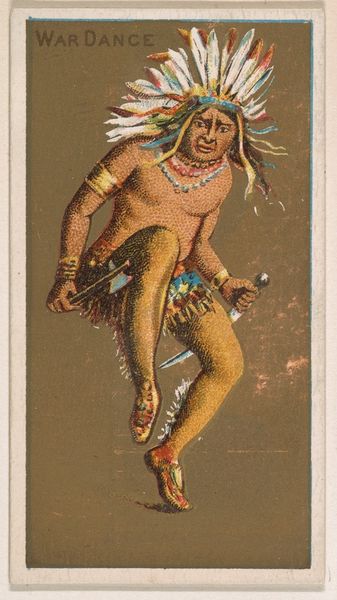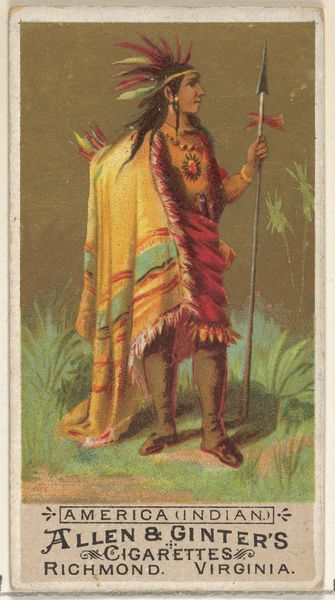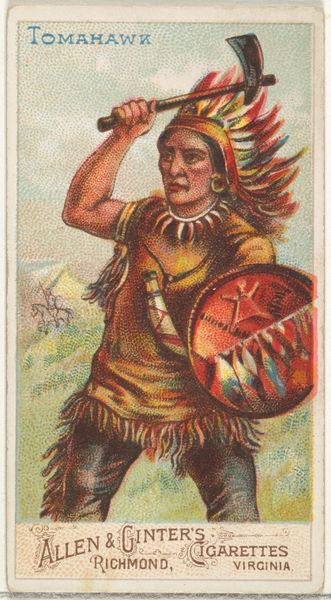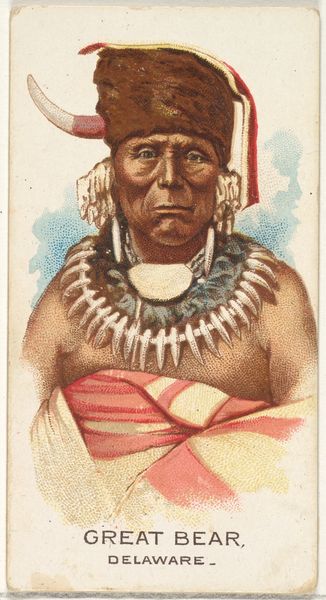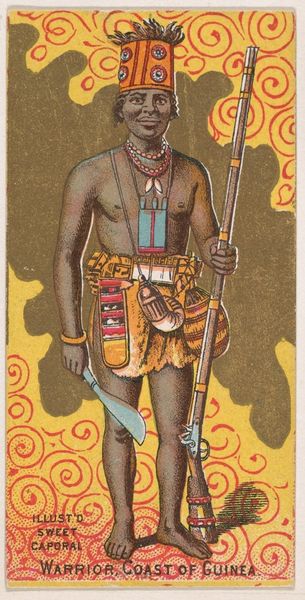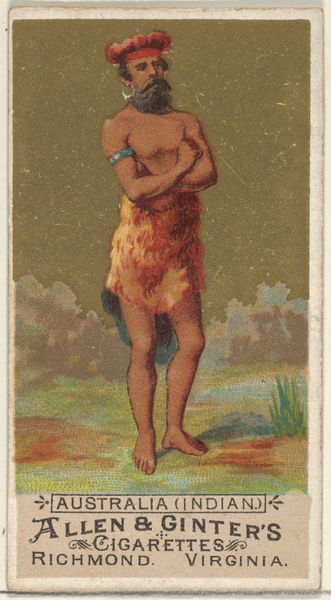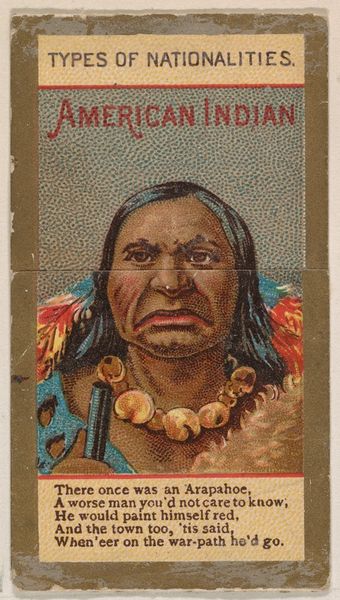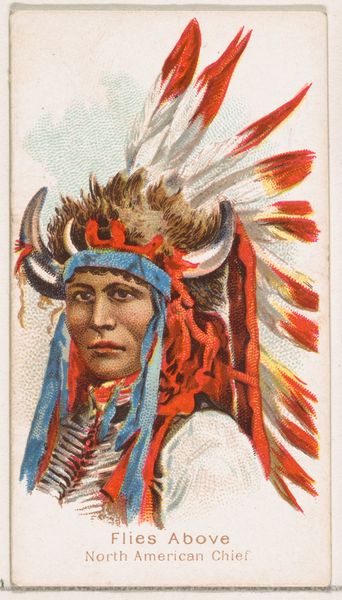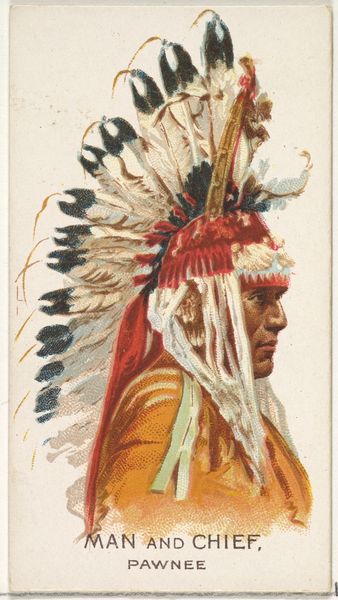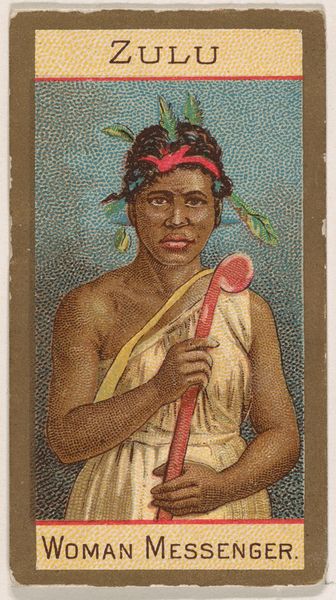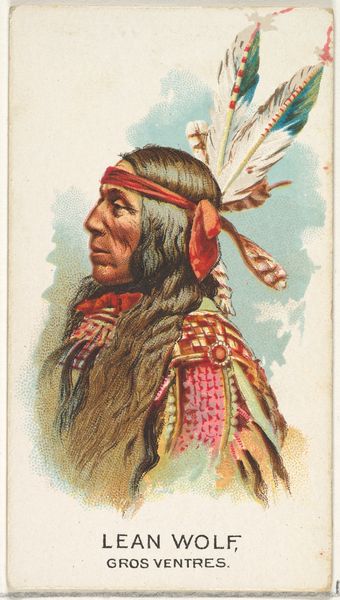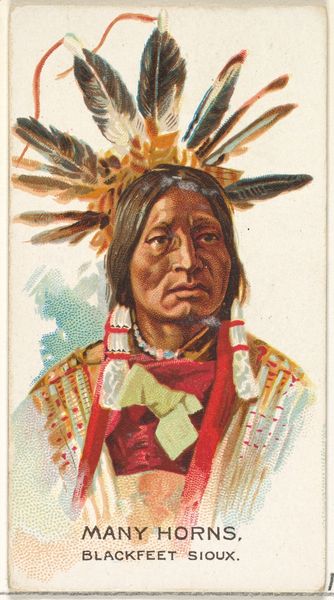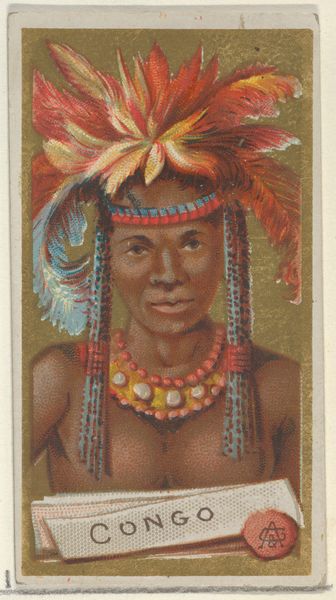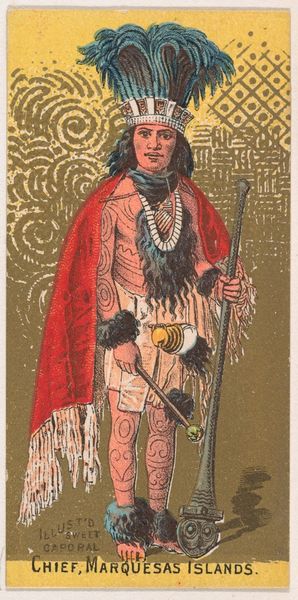
War Dance, from National Dances (N225, Type 1) issued by Kinney Bros. 1889
0:00
0:00
# print
#
caricature
#
tile art
#
coloured pencil
#
coffee painting
Dimensions: Sheet: 2 3/4 × 1 1/2 in. (7 × 3.8 cm)
Copyright: Public Domain
Curator: Here we have “War Dance, from National Dances,” created around 1889 by Kinney Brothers Tobacco Company. It’s a colored pencil drawing that was reproduced as a print for their tobacco products, now held at the Metropolitan Museum of Art. Editor: My initial reaction is a slight unease. It’s a dynamic image, with a figure poised mid-leap, but there's something…off. The theatricality feels almost mocking. Curator: Precisely. It's crucial to situate this piece within its socio-historical context. Tobacco companies frequently used images of Indigenous peoples to market their products, capitalizing on romanticized and often inaccurate representations to sell goods to a predominantly white consumer base. This is visual appropriation, plain and simple. Editor: So, this "War Dance" imagery feeds into the prevalent stereotypes and misrepresentations of Native American culture that were circulating at the time? Curator: Absolutely. These caricatures normalized the colonial gaze. We see an Indigenous man adorned with a vibrant headdress and wielding weapons, frozen in a perpetual state of "war." This reduces complex cultural practices to a single, easily digestible—and ultimately, dehumanizing—image. Editor: It’s jarring to think of this image being distributed on something as commonplace as a tobacco card. How might this contribute to the othering of Indigenous people? Curator: The image becomes normalized through everyday consumption. These seemingly innocuous cards, collected and traded, perpetuated harmful stereotypes and contributed to a political and social climate in which Indigenous rights and sovereignty were easily dismissed. This constant bombardment of misrepresentation creates lasting damage. Editor: Looking at it now, I am aware of my own complicity. What does it mean to encounter such imagery today? What are my responsibilities when viewing art of this period? Curator: These are critical questions. By confronting these images, and the power structures that enabled their creation and distribution, we disrupt their original intent. We have an ethical responsibility to challenge historical narratives and promote a more equitable representation of Indigenous cultures, not only in art, but in society. Editor: It really gives you pause, thinking about how a simple drawing on a tobacco card could be a vehicle for so much misrepresentation. Curator: And recognizing its significance allows us to advocate for a more just future.
Comments
No comments
Be the first to comment and join the conversation on the ultimate creative platform.
